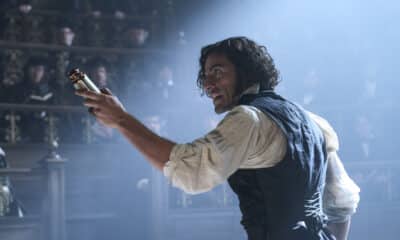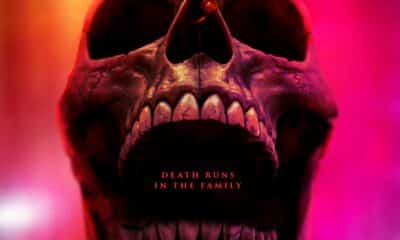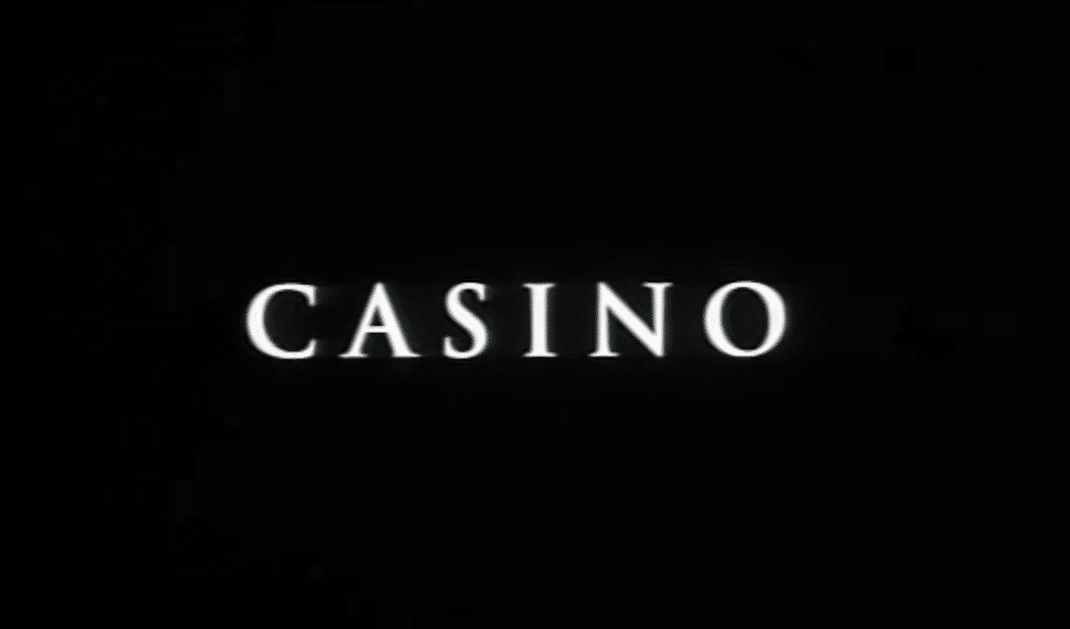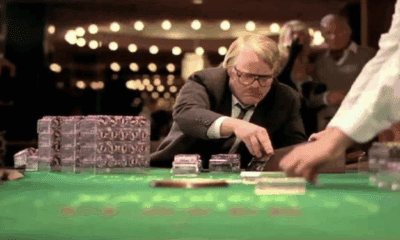On 16th May 2014, Toho’s greatest monster will return to the big screen in an American reboot. With just 23 weeks to go, we here at THN are counting down the GODZILLA back catalogue.
Director: Jun Fukuda
Starring: Akira Takarada, Kumi Mizuno, Chotaro Togin, Hideo Sunazuka, Toru Watanabe, Toru Ibuki, Akihito Hirada, Jun Tazaki
Plot: Fishermen are going missing. Inhabitants of Infant Island are being kidnapped. Behind it all is the Red Bamboo, a mysterious organisation. They have taken base on an island protected by a giant sea-creature known as Ebirah. If only somebody could stop it/them…
Godzilla returns in EBIRAH, HORROR OF THE DEEP (or GODZILLA VERSUS THE SEA MONSTER if you like things simple), a film that leaves behind the space travel, aliens, and other more far-out plot devices from the previous entry in the franchise. This wasn’t simply an intentional return to more Earth bound adventures for the big lizard, but also because the film was originally to star King Kong instead of Godzilla. This explains many of the inconsistencies regarding Godzilla’s personality in this feature, which are never destructive to Godzilla, but can become confusing at times. This is most notable when Godzilla shows interest in a human lady, something he’s never been that interested in before (that old horn dog Kong though, he’s the real ladies man). Although meant for Kong, it is probably something that will go unnoticed by most. After all, many parts have been written for certain actors before circumstances dictated otherwise, so why not hideous monsters too?
King Kong wasn’t the only one left out of this project, as regular series director Ishiro Honda was off making another kaiju movie, THE WAR OF THE GARGANTUAS, also for Toho. Step in Jun Fukuda, who worked as assistant director on Honda’s Rodan. Fukuda adds enough fresh perspective to really make EBIRAH, HORROR OF THE DEEP stand out, although interestingly enough, it was one of my least favourite Godzilla films for quite some time. I have no explanation for why I’ve had a sudden change of heart as I journey through this retrospective, but this is certainly a great addition. Fukuda’s stamp is noticeable from the outset with an opening that focuses on golden sunsets. This colour scheme continues throughout the film, with characters adorning reds, yellows, and oranges to a highly repetitive degree. This actually aids in the construction of a sort of visual poetry throughout.
Perhaps one of the reasons I disliked this film at first, but loved it this time, is the roundabout way the plot is approached. Essentially all that the story needs to achieve is to get some men onto an island in order to commence the monster mash. Instead we’re taken on a rather long journey that you could either roll your eyes at or embrace. We start off with a psychic praying to the land of the dead. She’s trying to contact a lost fisherman, and claims he is still alive. The family of said fisherman are taken in by the story and the fisherman’s brother, Ryota (Watanabe), sets out to a newspaper to get a story and continue the search. However, when waiting for the journalist to get back to him, he spots a poster for a dance marathon where the winner will receive a boat. He attends the dance marathon which is in full swing and realises he is too late to enter, but he does meet two guys, Ichino (Tougin) and Nita (Sunazuka), who agree to take him to the port and show him where all the boats are. They investigate one boat and find its owner Yoshimura (Takarada) on board. Yoshimura allows them to spend the night, but he, Nita and Ichino are awoken by Ryota sailing the ship out to sea. See what I mean about a roundabout way of getting from A to B? Granted it’s original and doesn’t rush, but it is also a needlessly complex start to a simple film.
While at sea it is soon revealed that Yoshimura is in fact a thief who was hiding out on the boat after stealing large sums of money. This is another plot strand that isn’t bad, but is highly unnecessary. Yoshimura is always a charming guy, and doesn’t really have an arc. Being played by Godzilla regular Takarada, he takes top billing and also gets the majority of the screentime, but there’s not a journey where his character learns a valuable lesson about stealing. The money plot is also forgotten about quickly, and the only way the script uses Yoshimura’s criminal past is so he can pick locks easily, which does come in handy. The ocean scenes allow for a lot of bonding between the four male leads, and they quickly build a friendship. Perhaps a little too quickly as they each start to meld into one another; one of the male characters could have easily been trimmed from the plot without causing any significant damage.
After their boat is attacked by a mysterious giant lobster known as Ebirah, the quartet find themselves stranded on an island. Everybody seems to be OK with the situation, and nobody overreacts even though they’d be justified in doing so. As they explore, it’s clear that Fukuda is a fan of movement concerning his shots, as tracking shots are very noticeable. It gives this island adventure a greater sense of life and personality. The island is shown off in the way that CGI effects are paraded out today. Upon this beautiful island, the foursome discover a group of people that have been kidnapped. One of these, the beautiful Daiyo (Mizuno), escapes and joins the guys, explaining her plight having been kidnapped from Infant Island by the evil Red Bamboo, a sort of militaristic terrorist organisation. One of their leaders rejoins Takarada with another star of the original GODZILLA, and series regular, Akihito Hirada. Hirada pays memorable tribute to his character in the first film with an appropriate eye-patch. The islanders are truly trapped as Ebirah will kill anything that enters his waters. Ebirah looks truly fantastic with so much detail, especially to the skin texture.
As Daiyo and the boys gather themselves in a safe cave, it becomes apparent that these are very regular people. It makes a change from the detectives, scientists, journalists, and astronauts that have dominated previous Godzilla films. Taking all the action away from society was probably a budgetry reason, but it comes across as an enjoyable change (at least for this viewing). The regular people, as even Takarada’s thief is just an average person, also make this a more human story. The characters have to use their own initiative to solve their problems and can’t rely on the military or scientific saviours. Whilst hiding in the cave, Godzilla is discovered sleeping safe and sound (although he is presumed dead). Ryota discovers that his brother ended up on Infant Island, at which point we are treated to a wonderful dance and celebration to Mothra as we quick cut over to the big bug’s homeland. The dance is very impressive and it is revealed in the credits that a special troop carried off such scenes.
After a breaking into the lair of the Red Bamboo, our heroes are split up. One is captured and Ryota takes off in a balloon that just so happens to take him to Infant Island. Meanwhile, Daiyo and Yoshimuru decide to wake Godzilla using lightning (a remnant of it originally being King Kong and his connection to electricity in KING KONG VERSUS GODZILLA). After Godzilla awakes, he challenges Ebirah in a rather daft game of boulder tennis. Godzilla then retreats and takes a liking to Daiyo. It’s a rather calm state Godzilla finds himself in, as he takes a moment to just sit down on a rock. This quiet moment may have been meant for the giant gorilla, but it works for Godzilla too, making him more relatable without making him more human. You’d be tired too if you had all these monsters to fight. Godzilla is then attacked by a large (but not really giant) bird and then by a number of Red Bamboo fighter jets. It’s a glorious action scene, and the superimposing of images against each other shows great advances. It’s also accompanied by some funky music, which is just what you want in a plane vs. monster battle.
Godzilla defeats the planes and the bird, makes his way to the Red Bamboo base and begins to destroy it. It is also discovered that a special fruit creates a yellow liquid that deters Ebirah. Godzilla challenges Ebirah to a final battle, which this time also shows that Fukuda differs from Honda as he incorporates many more close-ups, giving us a more intimate experience during the fight. It certainly makes the removal of Ebirah’s claws more powerful, as well as enhancing the underwater shots which make a return for the first time since GODZILLA. The shots are also shorter making for a much quicker pace. A nuclear self-destruct button is hit and the Red Bamboo are destroyed trying to escape using (unknown to them) fake yellow fruit juice. Meanwhile Mothra has come to take the survivors away from the island. Godzilla manages to escape and we assume everyone lives happily ever after.
EBIRAH, HORROR OF THE DEEP is a wonderful step back into simplicity. A secluded island setting makes way for more human stories and a better monster fight, rather than focusing on destruction porn. Fukuda takes different approaches meaning it also seems fresh in terms of directing, even though this change may have been what put me off before. It will be interesting to see if it remains as enjoyable now that the bar has been raised, but as a lighter take on Godzilla, it’s pretty darn good.
Dub-Misstep: A horrible step backwards in terms of dubbing. Here, some of the voices are bizarrely cartoonish and almost ‘unlistenable’. There also seems to have been no attempt to match what is being said with the movement of the lips. Released straight to TV probably had something to do with it, and although I say it’s a step backwards, it actually premiered before the previous film could hit cinemas.
Monsters: Godzilla takes on the lobster-like Ebirah, while Mothra is hinted at throughout and just appears at the end for a quick rescue. There’s also a large bird at one point, who renames nameless and doesn’t quite match up to the size of other Kaiju. Does set on fire pretty well though…
Notes For GODZILLA (2014): A lack of science-fiction in terms of space adventure would be a plus in this day and age. This is where it also starts to get a bit fierce with monster-on-monster violence. Although, boulder related tennis matches are not recommended.
G-RATING:
View all the articles in our countdown right here!
GODZILLA will be released 16th May 2014. It stars Aaron Taylor-Johnson, Elizabeth Olsen, Juliette Binoche, Ken Watanabe, Bryan Cranston, Sally Hawkins, Akira Takarada, and David Strathairn.
Luke likes many things, films and penguins being among them. He's loved films since the age of 9, when STARGATE and BATMAN FOREVER changed the landscape of modern cinema as we know it. His love of film extends to all aspects of his life, with trips abroad being planned around film locations and only buying products featured in Will Smith movies. His favourite films include SEVEN SAMURAI, PASSION OF JOAN OF ARC, IN BRUGES, LONE STAR, GODZILLA, and a thousand others.

Latest Posts
-


Home Entertainment
/ 10 hours ago‘Piglet’ review: Dir. Andrea M. Catinella (2025)
Before settling in to watch Andrea M. Catinella’s Piglet, it is important to point...
By Kat Hughes -


Film Trailers
/ 10 hours ago‘Black Phone 2’ trailer; horror sequel lines up October release
A new trailer for Black Phone 2 has landed online from Universal Pictures. The...
By Paul Heath -


Netflix
/ 18 hours agoWatch the first six minutes of ‘Wednesday’ season 2
Netflix has dropped the first six minutes of the first episode in season two...
By Paul Heath -


Film News
/ 18 hours agoGuillermo del Toro’s ‘Frankenstein’ is unleashed at Netflix’s TUDUM event
Netflix has gifted the first proper look at Guillermo del Toro’s Frankenstein at a...
By Paul Heath










